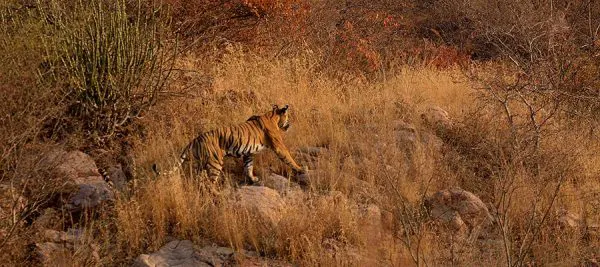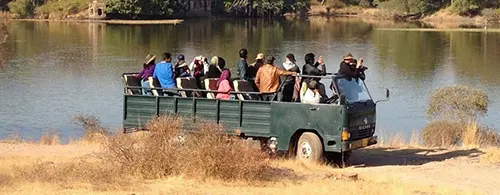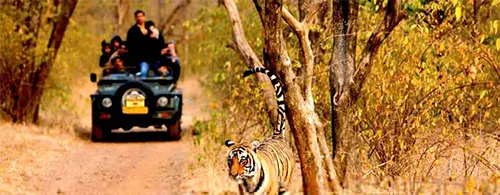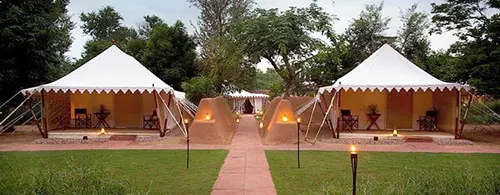Zone 1
The Singh Dwar is the main entrance to this zone. This area is a protected area nestling T-39 and T-57. The zone is majorly known for the return of Noor (T-39) along with her 3 cubs, which were in the news for sighting several times between 2016 and 2017. Amreshwar Dang, Tuti ka Nalla, Sultanpur, Gada Dub, and Peela Pani are the other significant places where tigers can be spotted in this zone.
Zone 2
This is the only zone that has water holes due to which tigers in good numbers sighted in this region.The tigers reported in this area are T19, T22, T72, T57, T28, T60, T39. Phuta Bandha, Jogi Mahal, Phuta Kot, Lahpur Tiraha, and Nal Ghati are the essential points where tigers can be sighted in this zone.Leopards have also reported in the area.
Zone 3
The key points for tiger sighting in this zone are Raj Bagh, Padam Talab, Mandook, Jogi Mahal, and High Point. Here you can also get an opportunity to see action between T-19 and T-28.
Zone 4
This zone was earlier a home to the famous tigress of Ranthambore, i.e., Machli. After her death, other big cats spotted in this region are T-28, T-64, T-19, T-75, T-41 and T-25. The important points famous for tiger sighting in this zone are – Adidaant, Singh Dwar, Tamakhan, Lakkad Da, Lambi, Malik Talab, and Berda.
Zone 5
The zone 4 and Zone 5 share a few things in common such as entry gate and tigers and sighting spots. The tigers spotted here are T-74, T-75, T-28, T-25, and T-17. The important points of this zone are Jokha, Singh Dwar, Dhakda, Baghda, Anatpur, Bakola, and Kachida.
Zone 6
Zone 1 and zone 6 share the same boundary and hence T-39 (Noor) with her cubs sighted in this zone too. This region is entirely different from the above 5 zones having more beautiful landscapes with mountains in backdrop and animals roaming in open grasslands.
Zone 7
This zone has fewer points in comparison to other zones named as Jamoda, Kushalipura, Chidikho, and Rajbagh Naka. The tigers spotted in this region are T-34 and T-8.
Zone 8
The big cats, T-8 and T-34, are spotted in this region, which is seen in Zone 7 too. The important points of this region are Bhat, Balas, Mahakho, Kherai, Neemli Dang, and Kali.
Zone 9
Other than T-59, this zone is famous for nestling T-42 (Fateh), which is an aggressive male tiger known for once chasing the forest department vehicles and captured killing a Sloth bear on trap cams.It homes other various rich biodiversities such as Aquatic birds, Caracals, and Sloth bears.
Zone 10
The tigers spotted here are T-43, T-13, and T-42. The important points where the tigers can be sighted are Banskhori, Bodal, Kushalipura, Aantri, and Halonda. It is advisable to the tourists to choose any zone available and enjoy the right seeing of the beautiful landscape.








